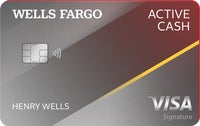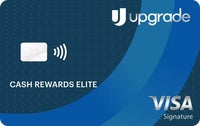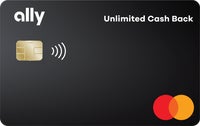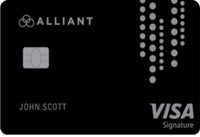Best 2 percent cash back cards

The Bankrate promise
At Bankrate we strive to help you make smarter financial decisions. While we adhere to strict , this post may contain references to products from our partners. Here's an explanation for . The content on this page is accurate as of the posting date; however, some of the offers mentioned may have expired. Terms apply to the offers listed on this page. Any opinions, analyses, reviews or recommendations expressed in this article are those of the author’s alone, and have not been reviewed, approved or otherwise endorsed by any card issuer.
Our writers and editors used an in-house natural language generation platform to assist with portions of this article, allowing them to focus on adding information that is uniquely helpful. The article was reviewed, fact-checked and edited by our editorial staff prior to publication.
Not everything in life has to be complicated, especially when it comes to finance. While rewards credit cards that earn points or miles and offer rewards in different bonus categories can be lucrative, many people prefer the simplicity and consistency of flat-rate cash back cards.
Whether most of your purchases fall outside the typical credit card bonus categories or you’re tired of trying to remember which card rewards what, flat-rate credit cards are great for those who like to keep earning and redeeming rewards simple.
There are many flat-rate cards available at various credit levels, but the best cards offer 2 percent cash back instead of the typical 1.5 percent back. Some cards also have additional benefits, including travel perks and shopping protections.
Here are some of the best 2 percent cash back credit cards on the market.
Comparing the best 2 percent cash back cards
| Card name | Best for | Cash back highlights | Welcome offer | Bankrate score |
|---|---|---|---|---|
| Wells Fargo Active Cash® Card | Overall |
|
Earn a $200 cash rewards bonus after spending $500 in purchases in the first 3 months | 4.3 |
| Citi Double Cash® Card | Pairing |
|
Earn $200 cash back after you spend $1,500 on purchases in the first 6 months of account opening. This bonus offer will be fulfilled as 20,000 ThankYou® Points, which can be redeemed for $200 cash back. | 4.2 |
| Upgrade Cash Rewards Elite Visa® | Long-term financing |
|
$200 bonus after opening a Rewards Checking Plus account and making 3 debit card transactions* | 4.2 |
| Ally Unlimited Cash Back | Ally Bank customers |
|
N/A | 3.4 |
| Alliant Cashback Visa® Signature Card | High flat rate |
|
N/A | 3.9 |
| Apple Card | Apple customers |
|
N/A | 3.5 |
Top 2 percent cash back cards

Wells Fargo Active Cash® Card

Citi Double Cash® Card

Upgrade Cash Rewards Elite Visa®

Ally Unlimited Cash Back

Alliant Cashback Visa® Signature Card

Apple Card
How to choose the best 2 percent cash back card for you
While the rewards rates on these cards may be similar, each of these 2 percent flat-rate cards comes with unique perks, advantages and disadvantages. Here are some questions to keep in mind when comparing cards and planning how to maximize your flat-rate cash back card:
What’s the welcome bonus?
Welcome bonuses can be hard to come by on 2 percent cash back cards, so cards that offer them are at a distinct advantage. While the presence of a bonus shouldn’t be the only reason you pick one card over another, keep in mind the outsized value of these offers: You can typically earn around $200 as part of a sign-up bonus after only a $500 to $1,500 spend, which can be a great perk as long as you don’t overspend.
Since welcome bonuses are usually only available for the first two to four months, make sure it’s achievable in the given time limit and you don’t have to stretch your budget to fulfill it.
What are the perks?
This will probably be the most important part of choosing between flat-rate cards. Along with earning cash back, the best 2 percent cash back cards come with extra benefits and protections, including perks like purchase protection, food delivery subscription credits, cell phone insurance and more. As you’re considering which card is best for you, consider which perks would be most useful to you, whether they focus on travel, shopping, credit building and more.
How can I redeem rewards?
While you may earn cash back at the same rate, the potential value of your rewards can vary, especially when factoring in the different redemption methods. While some 2 percent cash back cards only let you opt for cash back redemptions in the form of statement credits or direct deposits, others give you the flexibility to redeem for travel, gift cards, online shopping and more. The key is how much value you get for your rewards with different redemption methods.
For example, your rewards may lose a lot of value if you opt for gift card or online shopping redemptions instead of cash back. On the other hand, you may get more value for your rewards if you pair your cash back card with a higher-tier rewards card and redeem for travel (as in the Chase Trifecta).
You may also face redemption limitations. Some cards only allow you to redeem for cash back after you’ve reached a certain rewards balance or only in certain increments. You’ll have to consider these restrictions to decide whether a card is worth it.
What’s next?
Use these Bankrate tools to help you find a card that suits your needs best.
Frequently asked questions
-
A 2 percent cash back rate is a solid earning rate for credit card purchases, but not necessarily the best available. Some credit cards offer higher rates on all purchases or on specific spending categories. The best cash back card for you depends on your individual spending patterns and whether you’re willing to manage several cards or pay annual fees for greater rewards.
-
A 2 percent cash-back card can be valuable if you frequently use it for everyday purchases and pay off the balance each month, offsetting the higher APRs that these cards typically have. The rewards can accumulate over time, but it’s important to consider your spending habits and financial goals to determine if it’s the right choice for you.
-
Several credit cards offer 5 percent cash back in select categories. You’ll want to review the options that reward 5 percent back because many of them have different rewards categories, perks and benefits. The right one for you will reward its highest cash back rate in a category you already include in your regular spending.
The bottom line
If you’re looking for a simple way to earn a high rewards rate on all your purchases, you have more options than ever, including cards that carry sign-up bonuses, intro APR offers or low fees. Just be sure to consider all the details to find the right one for you. You can also use Bankrate’s CardMatch tool to find the best 2 percent flat-rate card based on your credit profile.
When choosing the best 2 percent cash back card for you, consider factors such as welcome bonuses, perks and redemption options. With the increasing popularity of these cards, it’s important to carefully compare all the details to find the right one for your financial needs.
*All information about the Alliant Cashback Visa Signature Credit Card, Apple Card and Ally Unlimited Cash Back Mastercard has been collected independently by Bankrate and has not been reviewed or approved by the issuer.
Related Articles





